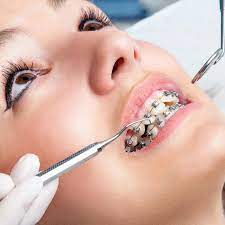Introduction:
Dental braces have evolved significantly over the years, offering not just effective teeth alignment but also improved comfort. Choosing the right braces involves considering factors like effectiveness in treatment, comfort during wear, and aesthetic concerns. This article explores some of the Best Dental Braces available today, focusing on their comfort and effectiveness in achieving a beautiful, straight smile.
Types of Dental Braces:
- Traditional Metal Braces: Traditional metal braces have been a staple in orthodontics for decades. They consist of metal brackets bonded to the teeth and connected by wires. Despite their conspicuous appearance, modern versions are smaller and more comfortable than their predecessors. They are highly effective for all types of orthodontic issues, from mild to severe misalignment.
- Comfort: Initial discomfort may occur as the mouth adjusts to the braces, but advancements in design have reduced friction and irritation over time. Patients can customize their braces with colored bands for a personalized touch.
- Ceramic Braces: Ceramic braces function similarly to metal braces but use tooth-colored or clear ceramic brackets. This makes them less noticeable, especially from a distance, which appeals to many adult patients.
- Comfort: Ceramic braces are smoother than metal braces, reducing irritation to the gums and inner cheeks. They are stain-resistant and blend in with the natural tooth color, offering a discreet treatment option.
- Lingual Braces: Lingual braces are placed behind the teeth, making them virtually invisible from the front. They are custom-made for each patient and offer effective treatment for various orthodontic problems.
- Comfort: Lingual braces can initially cause tongue discomfort as the tongue adjusts to the new positioning of the brackets. However, they are a great option for those who prioritize aesthetics without compromising treatment effectiveness.
- Clear Aligners (e.g., Invisalign): Clear aligners have gained popularity for their virtually invisible appearance and convenience. They are removable for eating and cleaning, making them easier to maintain compared to traditional braces.
- Comfort: Clear aligners are made from smooth plastic, eliminating the irritation that can be caused by wires and brackets. They are custom-fit for each patient, gradually moving teeth into alignment without the need for adjustments.
Choosing the Best Braces:
When choosing the best dental braces for comfort and effectiveness, several factors should be considered:
- Orthodontic Needs: Consult with an orthodontist to determine which type of braces will be most effective for your specific alignment issues.
- Aesthetic Concerns: Consider whether discreet options like ceramic braces or clear aligners align with your preferences.
- Lifestyle Factors: For those with busy lifestyles or who play contact sports, removable clear aligners may offer greater convenience and safety.
- Budget Considerations: Traditional metal braces are often the most affordable option, while ceramic braces and clear aligners may be more expensive.
Conclusion:
Ultimately, the best dental braces for comfort and effectiveness will vary based on individual needs and preferences. Advances in orthodontic technology have made braces more comfortable than ever before, offering a range of options to suit different lifestyles and aesthetic concerns. Whether you opt for traditional metal braces, ceramic braces, lingual braces, or clear aligners, each type can provide effective treatment to achieve a straighter smile. Consultation with an orthodontist is crucial to determine the most suitable braces that will ensure both comfort and successful results in your orthodontic journey.





Comments